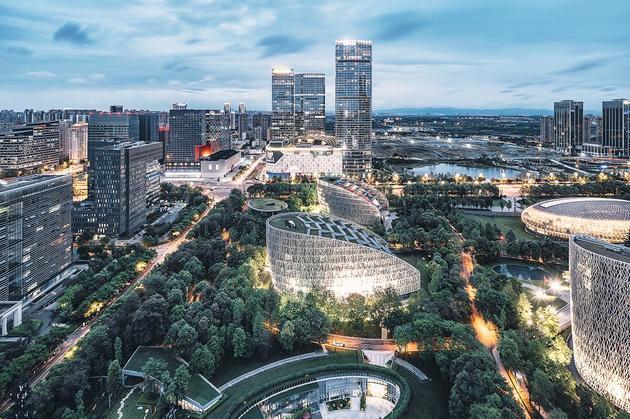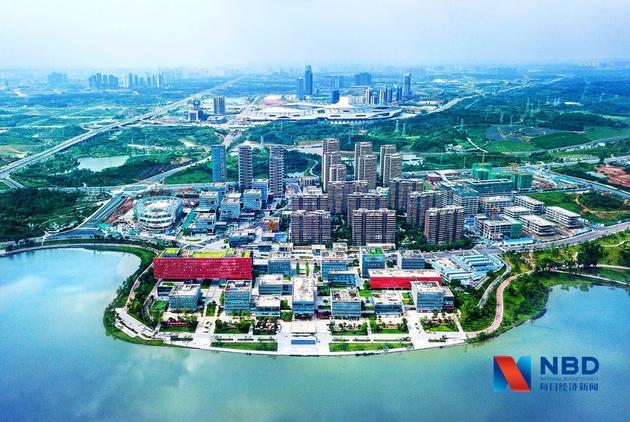
Photo/VCG
Mar. 7 (NBD) -- One doesn't have to follow a beaten path if he wishes to benefit the people, and one doesn't have to observe old conventions if he wishes to get things done.
On March 5, when delivering the government work report to lawmakers, Chinese Premier Li Keqiang mentioned the smooth implementation of reforms in the State Council and local government agencies. The reform, being regarded as "systematic, integral and restructuring", has been carried out for one year and has achieved major progresses.
During the ongoing gatherings of the Chinese People's Political Consultative Congress and the National People's Congress, heads of many newly-established agencies are making their debut in the "minister passage".
The world is undergoing great changes which it hasn't seen in a century. Against the new historical background, China needs to adjust and improve its system and institutions with unprecedented courage to clean out malpractice and reform, so as to cope with the profound changes that have taken place and will continue to take place. But for local governments, the task is more specific and requires creative and initiative actions.
This January, Chengdu commenced institutional reform. Apart from prescribed moves, the sub-provincial city in southwest China, like other places, also tailored measures to local conditions and took the initiative to innovate.
During this round of restructuring, Chengdu set up 11 special agencies, ranking first among sub-provincial cities. Besides Office of Development Committee of East Chengdu New Area and Chengdu Garden City Construction Administration, the city also established or adjusted and optimized 3 special agencies.
The series of innovative actions originate from one goal, which is to accelerate the formation of an institutional function system for a megacity to promote high-quality development, to create quality life and to achieve highly effective governance.
The appropriate institution layout, function allocation and duty performance will provide system guarantee for Chengdu to build itself into a city in full expression of the new development philosophy and will open a new chapter for this megacity governing a population of 20 million.
On the morning of February 11 of 2019, the first workday after the Chinese New Year, Chengdu Garden City Construction Administration, which had been established for less than a month, convened a work meeting.
What lay ahead of Yang Xiaoguang, party secretary and director of the agency is how to build a beautiful city through creating garden city scenes.

File Photo/Zhang Jian (NBD)
A year ago, the construction concept of a garden city took shape in Chengdu, giving the city a new direction of urban development.
Chengdu Garden City Construction Administration, which plays a leading role in building the garden city, is responsible for translating the concept of environment first and green development into practice in its development, adhering to the concept of "clear water and green mountains equal to mountains of gold and silver", and exploring transformation of ecological values.
Like other Chinese cities, Chengdu already has put "physical consolidation" of organizations and institutions in place and is now waiting for the "chemical changes". However, it's not easy.
What is a garden city? What does it take to build a garden city? Those are fundamental questions to be resolved, because "an error in the basic logic is likely to derail the following moves".
In an interview with National Business Daily, Yang Xiaoguang said, "those questions deserve continuous profound research not only at current stage but also during the implementation process." Yang frequently mentioned and emphasized two words, "research" and "learning".
Behind the "anxiety" for lacking knowledge and skills lies the fundamental changes that have happened to the philosophy of city development and governance. The new development was given birth to by the profound changes vital to China. " There is no way to promote innovation and fulfill our mission, if we don't strive to improve our overall competence and ability."

File photo/Zhang Jian (NBD)
Such philosophy is also pushing ahead with Office of Development Committee of East Chengdu New Area.
On March 2, the design team of Liu Thai Ker, crowned as the father of Singapore's city planning, was invited to give a lecture to governors and constructors of the eastern area of Chengdu, with the theme of building the east new area with a global vision by drawing on the experience of Singapore.
"The training is aimed at helping the trainees to improve weak links as soon as possible to adapt to the new task," said Zhang Ying, party secretary and director at the Office of Development Committee of East Chengdu New Area.
Currently, the strategy of "developing the east" is the key to the Chengdu's development, showcasing the city's ambition in further improving its strength.
As of March 2019, Chengdu has successfully promoted its local organizational reform. After all personnel take office, their responsibilities and rights will be clearer. All the moves serve one goal, which is to accelerate the formation of an institutional function system for a megacity to promote high-quality development, to create quality life and to achieve highly effective governance.
In 2018, population in Chengdu increased by 740,000 and the number of market entities rose by 540,000. The output value of the high-tech industry exceeded 1 trillion yuan and the GDP of Chengdu surpassed 1.5 trillion yuan. Meanwhile, Chengdu governs a population of 20 million, which poses unprecedented challenges to the city's urban governance system and capacity.
After the solutions for determining function configuration, internal organizations and staffing are issued, a brand-new governance landscape of a megacity will be unfolded.
Email: gaohan@nbd.com.cn; zhanglingxiao@nbd.com.cn;
tanyuhan@nd.com.cn; wenqiao@nbd.com.cn


 川公网安备 51019002001991号
川公网安备 51019002001991号





